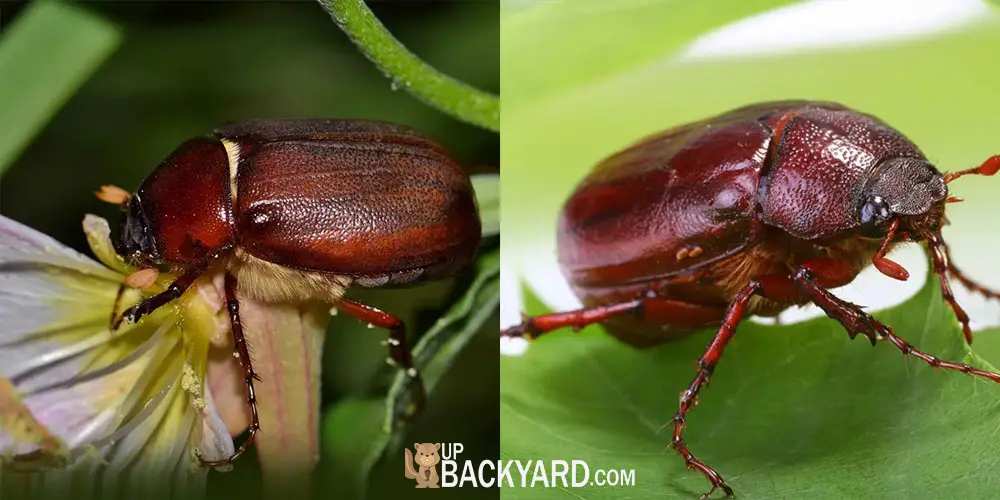June bugs are an unpleasant but common part of summer nights. Nothing ruins the night like a June bug flying into your hair, face, or eye, but unfortunately, there is not much you can do to get rid of June bugs, right?
While it is true that you would never be able to completely rid your space of the occasional June bug, there are ways that you can drastically cut the population down.
Eliminating the grubs, adults, and eggs of June bugs is possible and will help keep your summer June bug free.
Are June Bugs a Problem?
While the name June bugs actually refers to over 300 beetles from the genus Phyllophaga, we tend to think of the massive brownish beetles we hear hitting out lights and decks during the summer months.
However, since there are so many species with a variety of colors and sizes, some June bugs even look iridescent greenish blue.
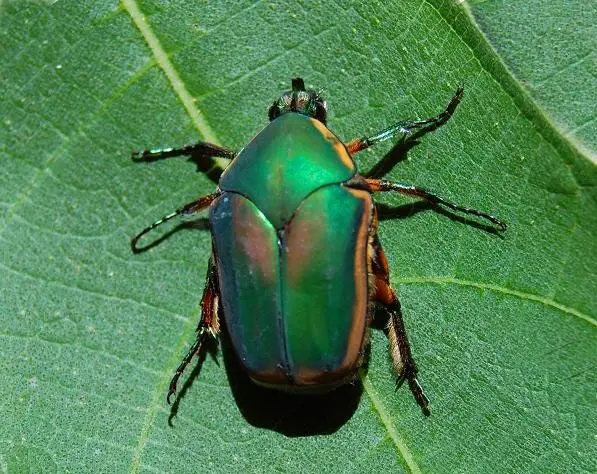
While they are pretty to look at, they can cause major damage to yards and even attract nasty animals looking for a snack.
These irritating pests are found mainly in the Northern Hemisphere (*), making our summers anything but enjoyable.
Note: (*) Northern Hemisphere contains North America, the northern part of South America, Europe, the northern two-thirds of Africa, and most of Asia. (Retrieved from National Geographic)
While adult June bugs will grab a few bites from your plant’s leaves, the larvae are the ones you need to watch for.
June bugs lay eggs in the soil and when they hatch, the juveniles feed on roots as their only food source. This is especially detrimental to grass yards.
Even a small amount of June bug juveniles can kill a good chunk of your grass at the root, leaving brown and bald spots throughout your yard.
Even though June bugs are only juveniles for a very short amount of time, the problems do not stop when they grow up.
While the adult June bugs may bite a leaf or two, the main problem is what wants to bite them. June bugs are a tasty and crunchy snack for many unfavorable house guests.
Snakes, raccoons, skunks, parasitic wasps, tarantulas, and moles are all creatures that enjoy eating June bugs. Since June bugs are so large, they provide a good meal and are considered to be a great food source for these animals.
If you have a large June bug population, you may also notice an increase in these other creatures as well and none of them are very beneficial for you or your space.
How Do I Know If I Have a June Bug Problem?
You may be wondering how to tell if you have a June bug problem in your yard. The obvious answer would be if you are noticing a lot of these beetles flying into your windows or outdoor lights.
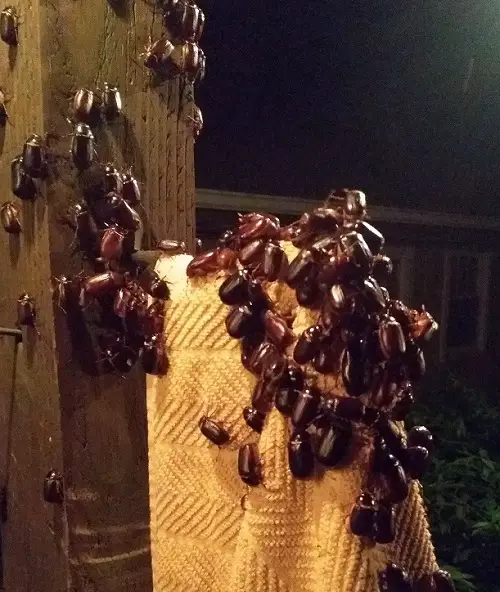
These bugs are massive and will make their presence known fairly easily. But just because you do not physically see them, does not mean that you do not have a June bug problem.
If you are noticing browning or dying grass in your yard, try pulling up the patch of grass.
If you see a lot of grubs, you have a June bug problem. You may also want to check for these juvenile June bugs if you notice a lot of moles or skunks digging in your yard.
They would be digging to find these grubs for food.
You might also like: Pest Control 101: How To Get Rid of Water Roaches?
How to Get Rid of June Bugs
Now that we have established why June bugs are an issue that are much larger than just their annoying flight habits and scary size, what can you do to get rid of them?
Get the Grubs
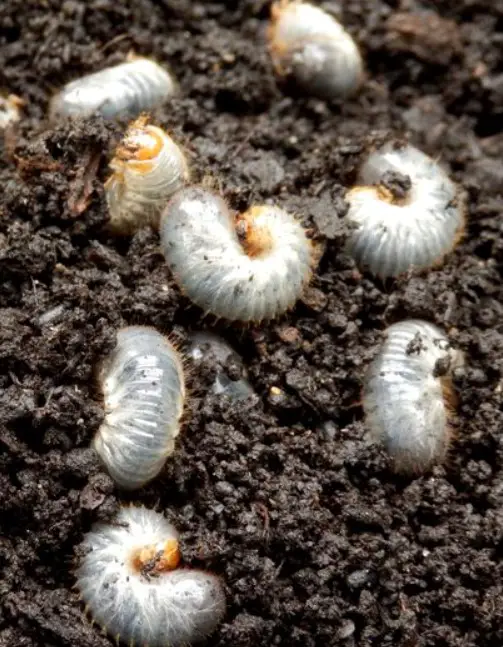
The first step is to target the June bugs at the appropriate time. The best time to deal with a June bug infestation is early, before the grubs have time to do too much damage and well before they grow into flying adults.
The good news is that the grubs remain near the surface of the soil, making it easy to target them.
Spraying your grass with insecticide a few times a season helps prevent grubs from growing into adults and should keep the population under control.
If you do not want to spray periodically, begin spraying in September, as this is a time when many grubs will be present.
Trap the Adults
Once the grubs are taken care of, you can turn your attention to adult June bugs. Since you have removed all the grubs, you do not want the adults to lay more eggs in the soil.
Luckily, it is relatively easy to attract adult June bugs. Take an old jar and fill it with half a cup of hot water and half a cup of molasses.

Next, take the jar outdoors to a bush or shrub that the June bugs seem to like. Bury the jar under the plant so that only the lid is exposed.
June bugs will fall in and be unable to get out. The only downside is that you will have to do this almost daily for it to be effective.
Catch the June Bugs
The homemade trap should be efficient enough to help keep the population down.
With no grubs to grow into adults and no adults to lay eggs, the population should remain relatively low in your yard.
If you still notice a June bug or two on leaves throughout your space, just remove them with a gloved hand.
You can place them in a jar with soapy water to kill them, or simply smoosh them if you’re okay with that approach.
Insecticide
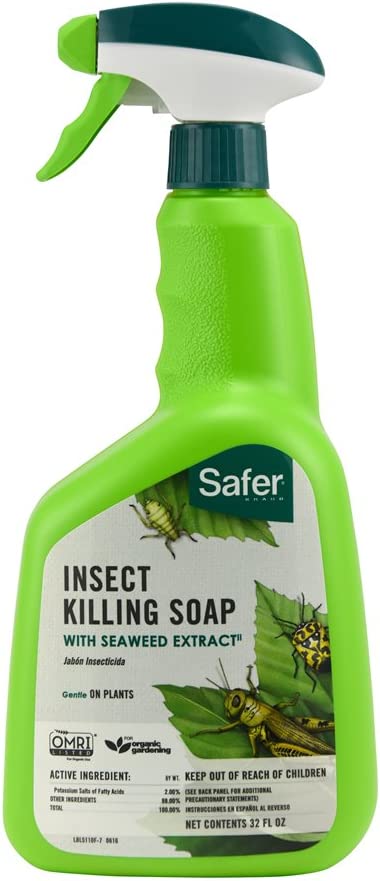
If your infestation is still bad and not under control after taking these steps, you can purchase insecticide that will work on adult June bugs. Unfortunately, these will also destroy beneficial insects in your garden as well.
Some insects, like hoverflies and lacewings, provide essential and beneficial help within your garden. These insects eat pests like aphids and mites and help pollinate flowers on crop plants.
Spraying the insecticide will help with the June bugs but since it will harm these other insects, you need to weigh the pros and cons before using it.
DIY Natural Protection
If you decide that the chemical insecticide is not the way to go for you and your garden, there are other alternatives that are chemical free and natural.
You can even make some of them at home. The most effective repellent is made by mixing one tablespoon of mineral oil, one pint water, one tablespoon dishsoap, and one whole garlic bulb minced.
Combine all ingredients and allow to sit overnight. Strain in the morning through a cheese cloth and add to a spray bottle.
It is thought that June bugs hate the smell of garlic. You will need to apply the spray relatively frequently to help keep the June bugs away.
If you do not want to spray anything on your plants even if it is homemade and chemical free, investing in a bug zapper is a great option.
Be sure to choose the larger option that is designed for June bugs. Place the light near their favorite hangout spots and hopefully the June bugs will be more attracted to the bug zapper. While this does help reduce the population, it does leave quite a mess.
Keeping the June Bugs Away
After you have completed all the work to get rid of these pesky flying creatures, you definitely do not want them to return.
You can set up a bird bath or bird feeder to increase the bird population in your garden space.
While this may have other negatives and create other problems for your garden, birds do eat June bugs and the presence of the birds alone may deter beetles from coming near your yard.
You can also put some diatomaceous earth around your garden space. This is a natural deterrent that is food grade and organic, making it safe to be used near humans and pets.
You can even put it in places where your family and pets will frequent, like the patio or garden.
Final Thoughts
June bugs cause more problems than just the unpleasant thunk on the glass as they hit the window.
They also attract gross creatures like skunks, moles, parasitic wasps, and tarantulas. In addition to the pests they attract, they are pests themselves.
With grubs feeding on roots of plants, mainly grass, you can be left with massive bald spots in your yard. To help prevent this from happening, there are a number of steps you can take to get rid of them.
First, take care of the grubs. Spraying pesticide in the soil is an efficient way at knocking out the population.
Trapping and getting of adult June bugs prevents more eggs from being laid.
You can also use a pesticide spray, whether organic or chemical, to help reduce the population. Bug zappers can also work, but do make a mess.
All-in-all, June bugs are a tricky and unpleasant part of the summer season. However, with vigilance and dedication, you can easily treat and prevent June bug infestations and enjoy a beetle-free summer.
